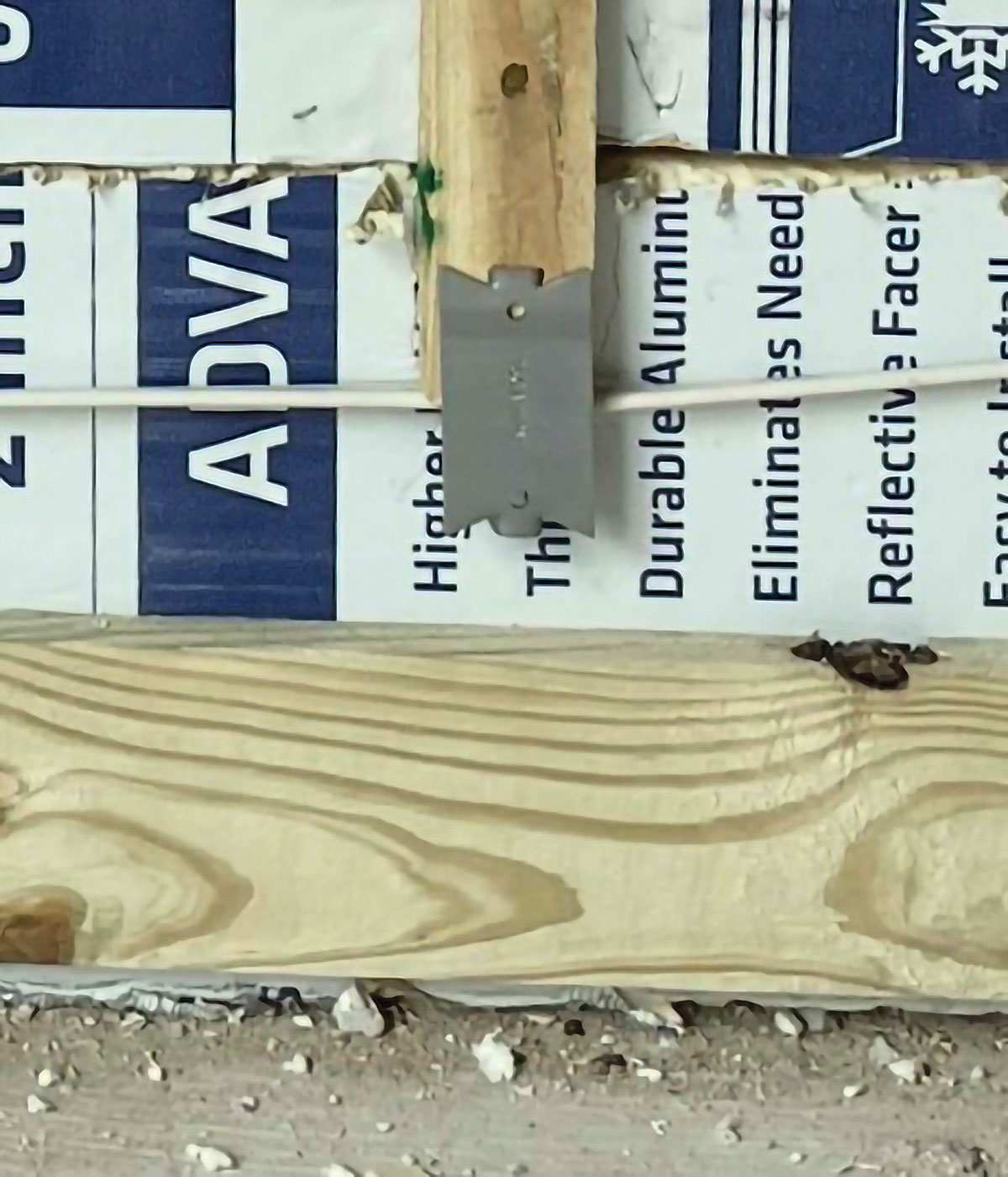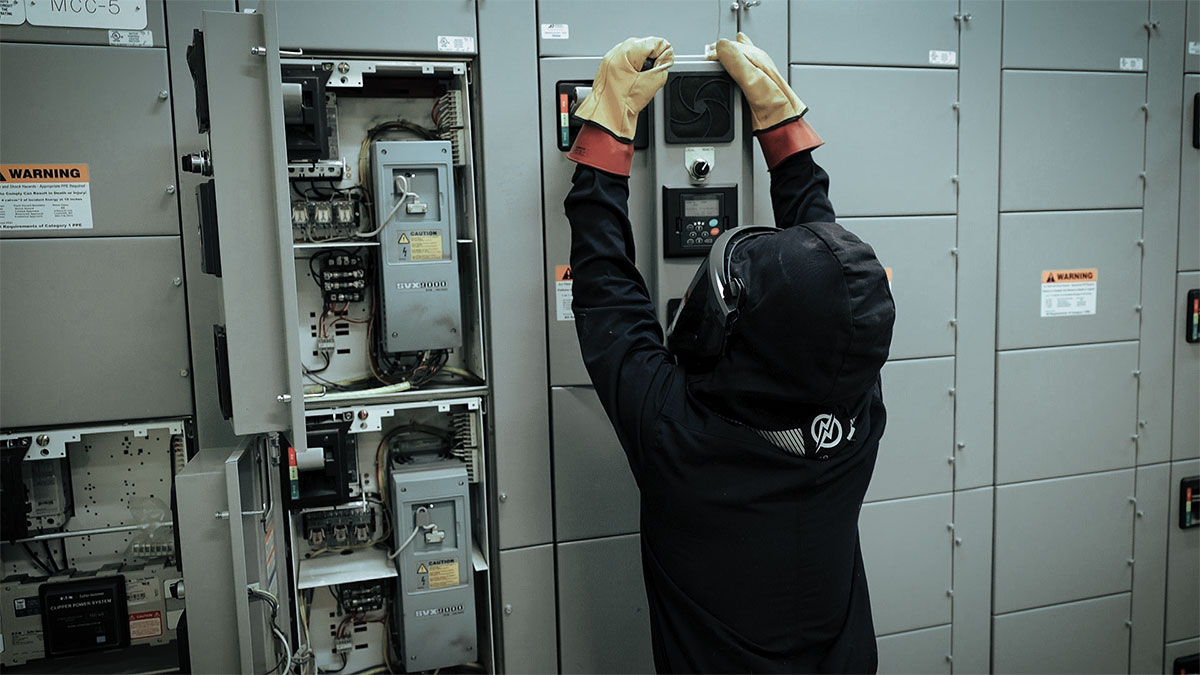The final connection between the photovoltaic (PV) power system and the electrical utility grid is always an area of high interest to both inspectors and to the utility, because both agencies are responsible for safety. These connections vary significantly from PV system to system due to the size of the PV system and to the configuration of the existing service-entrance equipment. These variations are made more complex because of differences in Section 690.64 in the National Electrical Code (NEC) between the 2005 and 2008 editions.
Load Side Connections
Section 690.64(B) establishes the requirements for connections of the output of utility-interactive inverters on the load side of the main service disconnect. The key to understanding this section is in carefully reading 690.64(B)(2) and noting that the ratings of overcurrent devices supplying a busbar or conductor must be added so that the sum of these ratings does not exceed the rating of the busbar or conductor. Note that overcurrent devices supplying loads are not counted. Also note that the overcurrent-device (normally a circuit breaker) rating is used in this calculation and not the current flowing through the circuit. Overcurrent devices that would be counted are the main breaker and all breakers being back fed from utility-interactive PV inverters. We can use an equation of breaker ratings to express this requirement:
PV + Main <= Bus or Conductor
In the 2005NEC, this requirement applies to commercial (nonresidential/dwelling unit) PV installations. The requirement essentially says that if, for example, the site has a 400-A main service panel with a 400-A main breaker, then no (zero) PV can be added to the panel. In many commercial installations, this limitation forces the installer to a supply-side connection discussed below.
For residential installations a 120% allowance is added and to make the installations somewhat easier. The equation for residential looks like this:
PV + Main <= 120% Bus or 120% Conductor
In the residential example, a 200-A panel with a 200-A main breaker could have up to 40 amps of backfed PV breakers connected.
In the 2008NEC, 690.64 was rewritten and the 120% allowance was applied to commercial installations if an additional requirement was met. That requirement [690.64(B)(7)] says that the PV backfed breakers must be mounted at the opposite end of the bus from the main breaker or feeder. This location prevents overloading the busbar. If this requirement cannot be met, then the sum of the breakers will be limited to no more than the busbar rating on commercial installations. Note that the requirements apply to both the busbars in a panel or load center and to any conductor that is fed by overcurrent devices from multiple sources.

Figure 1. Section 690.64(B)(2) requirements in the 2005 NEC
In figure 1, the requirements in the 2005 NEC are applied to a multi-story building where a PV system requiring a 15-A circuit breaker is needed in a 100-A main lug panel on the tenth floor. This panel is fed through a 100-A breaker in a 400-A main lug panel on the fourth floor which is, in turn, fed by a 400-A circuit breaker in the 1000-A main distribution panel, which has a 1000-A main disconnect. Since this is a load-side connection, 690.64(B) applies to each panelboard and conductor supplied through an overcurrent device from multiple sources. To meet the requirement in the top floor panel, the panel would have to be removed and replaced with at least a 115-A panel. The feeder between the 100-A panel and the 100-A breaker would also be required to have an ampacity of at least 115 amps. If that top floor panel had a 100-A main breaker, then the feeder would need to be rated at 200 amps to meet the 690.64(B)(2) equation.
At the fourth floor panel, the sum of the rating of the breakers is 100 + 400 = 500 and this exceeds the panel rating of 400 amps. The panel would have to be replaced with a panel having a rating of at least 500 amps. The feeder between the fourth floor panel and the main panel would also have to be rated at 500 amps with a main lug panel. If that fourth floor panel had a 400-A main breaker, then the feeder would be required to be rated for 800 A. Now look at that 1000-A main service panel. The sum of the rating of breakers supply it is 400 + 1000 = 1400, which is significantly larger than the 1000-A rating. It needs to be replaced with at least a 1400-A rated panel.
Yes, life is tough and seemingly unfair, but these requirements were established in 1984 with the concept that they would protect those buses and conductors from overloads even when the PV system was enlarged, the panels had excessive loads placed on them or when the feeders were unknowingly tapped. The 2008 NEC provides some relief as shown in figure 2 and even more relief might come in the 2011 NEC.

Figure 2. Section 690.64(B)(2) requirements in the 2008 NEC
In figure 2, the 120% allowance is put in the calculations for this commercial installation as allowed by 690.64(B)(2) in the 2008 NEC. That 100-A panel on the top floor is OK, because 100 + 15 = 115 which is less than the allowed 120 amps. The same equation applies to the cable when the top floor panel is a main lug panel and the feeder does not need to be changed. If the top floor panel had a 100-A main breaker, then the equation for the feeder conductors would still be 15 + 100 = 115 <= 120 A, and the conductor would remain unchanged because a new sentence in 690.64(B)(2) requires that only the first overcurrent device connected to the inverter output be counted in subsequent equations.
At the fourth-floor 400-A panel, the allowance would be 480 A (120% of 400 = 480), but the additional rule in 690.64(B)(2) requires that only the first overcurrent device connected to the inverter output be counted in subsequent equations. The equation becomes 15 + 400 <= 480 and no changes in the panel are required. With a main lug 400-A panel, the same equation applies to the feeder to the main panel. Also, even if a 400-A main breaker were installed in that 400-A panel, then the cable ampacity would not need to be changed.
Even with the allowances in the 2008 NEC for the load-side connections in 690.64(B), many systems are large enough that ripping out existing load centers and feeders is required and that becomes costly. The supply-side connections allowed by 690.64(A) are used.
Supply Side Connections

Section 240.21 tap rules don’t apply to these service-conductor taps, because the 240.21 requirements were developed over a number of years for a circuit with currents flowing one way from a single source protected by an overcurrent device. The service-entrance tap with a utility-interactive PV inverter may have currents flowing both directions from two sources, and one of them (the utility) has very limited overcurrent protection.
Actually making the tap will depend on the type of equipment involved. Many load centers do not have adequate space to splice to the incoming service conductors. The same holds true for the limited space in meter sockets. In these cases, the supply-side tap will require that a new enclosure be added between the meter and the separate load center.

Photo 2. Much space but tap would violate the listing on the device
Combined meter/load centers like the one shown in photo 1 can only be tapped with permission and instructions supplied by the manufacturers. The cables and busbars (photo 2) may be exposed with plenty of room for the tap, but in most cases, the manufacturer will not allow them to be tapped because it would violate the UL listing on the device. To add a supply-side tap to this type of installation may require adding a new external meter socket and a tap enclosure before the existing meter. Then the existing meter is bypassed with an appropriate set of jumper bars.

Photo 3. Main-Lug-Only Panel
One situation that arises in many parts of the country is the dwelling that has a main-lug-only panel (see photo 3). There is no single main breaker feeding the panel, but up to six main breakers are allowed. Where these panels have one or more empty breaker positions, they can be used as a supply-side connection. The basic restriction (not in the Code—wait for 2011) that would apply to this type of main service panel is that the sum of the overcurrent devices from the PV inverter(s) not exceed the rating of the panel bus or the rating of the service-entrance cables.
Summary
Connections from the PV system to the utility are still somewhat complex. However, the requirements in the 2008 NEC have allowed smaller systems to be more easily connected in the commercial environment. In either residential or commercial PV installations, the requirements of the Code should be studied in some detail to ensure that a safe and durable system is planned and installed.
For Additional Information
If this article has raised questions, do not hesitate to contact the author by phone or e-mail. E-mail: jwiles@nmsu.edu Phone: 575-646-6105
A color copy of the latest version (1.8) of the 150-page, Photovoltaic Power Systems and the 2005 National Electrical Code: Suggested Practices, published by Sandia National Laboratories and written by the author, may be downloaded from this web site: http://www.nmsu.edu/~tdi/Photovoltaics/Codes-Stds/PVnecSugPract.html
The Southwest Technology Development Institute web site maintains a PV Systems Inspector/Installer Checklist and all copies of the previous “Perspectives on PV” articles for easy downloading. Copies of “Code Corner ” written by the author and published in Home Power Magazine over the last 10 years are also available on this web site: http://www.nmsu.edu/~tdi/Photovoltaics/Codes-Stds/Codes-Stds.html
The author makes 6–8 hour presentations on “PV Systems and the NEC” to groups of 40 or more inspectors, electricians, electrical contractors, and PV professionals for a very nominal cost on an as-requested basis. A schedule of future presentations can be found on the IEE/SWTDI web site.














Find Us on Socials